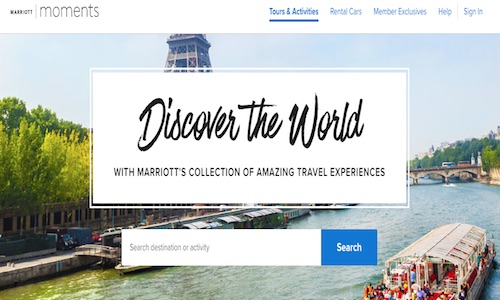
The value of customer centricity in loyalty as Millennials rise to the top
By cameron in Uncategorized
As Millennials advance in their careers, travel brands need to ensure their loyalty programs are keeping up with the changes they require to feel appreciated and valued.
Tnooz spoke to customer marketing firm rDialogue, which specializes in loyalty-building strategies, about how Delta’s Gold Medallion Status program gets things right for millennials.
Katy Garrett, marketing manager at rDialogue reflects the experience of many Millennials who are on the rise in their careers. A recent move to Boston—far from rDialogue headquarters in Atlanta—changed her flying habits and her needs. As she says:
“I wouldn’t necessarily say that it changed my expectations, but the things that bothered me about traveling for leisure became even less desirable.”
One of the features of status she values most, is that it saves time for things she’d rather be doing.
“The Gold Medallion program lets you cut a lot of lines, and on a lot of evenings I’m not getting back to my apartment until ten o’clock.”
The gamification aspect of loyalty—reaching milestones and earning badges—is only as valuable as the experiential features that status delivers: the time saving aspect, access to the lounge, and access to certain seats without paying a premium.
Delta also sends Garrett post-flight surveys, as part of an ongoing exchange of information with the airline which keeps Garrett engaged with the loyalty program.
Importantly, she feels that brands must apply the feedback they get.
“Brands are often taking surveys from customers, and I often feel that when they do that they are putting me into a segment, which leads me to have the expectation that they are going to recognize that feedback, but that rarely happens.”
Another challenge for Garrett is the ongoing perceptions of the business traveler profile, which rarely target her identity.
“There is the reputation that business travelers are older men. I don’t fit the profile for a typical business man, but the face of the modern business traveler is changing.”
Phil Rubin, CEO of rDialogue, believes customer-centricity is key to the evolution of loyalty programs, and credits Delta with getting things right on two key factors: transparency of program requirements and personalization.
Delta changing over to a revenue-driven model may have been a controversial move for many loyalty gamers, but Rubin believes it has worked out well for Delta’s loyal customers who spend money directly with the airline and not just with partner banks. He tells us;
“There were too many people qualifying based on credit card versus actual flown revenue..you need to find the right balance on the relationship with credit card partners and who is funding what.”
He believes account management should be transparent and reflect the customer behavior that the airline values most.
“It certainly applies to other sectors, such as hospitality, which were traditionally more yield focused than airlines.”
Rubin believes that personalization helps loyalty move beyond a transactional relationship to something more balanced and more valued by customers;
“To the degree that a customer feels recognized and is granted different experiences and benefits—an experience that saves them time and where customers feel more informed—there’s this great quid pro quo. More brand likability becomes more brand loyalty.”

Making room for more
In the hotel space, Rubin sees opportunities to innovate by making programs more about traveler recognition and on-site experience rather than merely transactional: “moving away from public entitlements to something that creates emotional attachments from guests.”
But with great chains come great challenges. The merger of the Marriott and Starwood loyalty programs, for example, will have to consider the value of each to existing members.
“We are paying close attention to that,” Rubin says.
So how would he suggest the brands manage the merger?
“We would maybe advise them not to completely disrupt what they have because Starwood Preferred Guest is recognized as the leading program out there—it does a great job on delivering on the guest experience..that’s ultimately where the future is. While it may become more challenging in the mid-market, certainly from a higher-end standpoint there is a lot of up-side.”
Marriott International announced a unified scheme just as the author was writing this report. From August 2018, the loyalty program offers one set of unified benefits across Marriott Rewards, The Ritz-Carlton Rewards and Starwood Preferred Guest.
The company anticipates members being able to earn 20% more points on average per $1 spent. Members will also be able to book stays and earn or redeem points among 29 participating global brands.
Additionally, the company is expanding its Moments platform for experiences with all guests able to pay for tickets and attractions with cash while only members will have access to more exclusive events.
With any hotel brand portfolios, Rubin sees programs needing to become refined so that they meet guest expectations according to the property that they frequent most.
“The challenge is that there is such disparity from brand to brand. Most have done a good job of setting expectations, butt here are practical realities that make it more difficult to provide a consistent experience across different brands—not just in terms of benefits but also in operations. You have the franchise model versus the management model, for example.”
“A future model might recognize that it needs to be customer driven, versus brand driven. Our view is that it is customer first. If you think about what a guest looks like, especially with technology today, the amount of data that we have access to, you could create a more customized experience delivered—at a minimum—based on each segment of guest.”
Moves from Marriott as well as Rubin’s comments are further supported by recent research by Expedia Affiliate Network.
It reveals that 71% of consumers feel quality of offering had the greatest impact on loyalty and that customer experience and improved breadth of product and service were valued more than discounts by their customers.
![]()

